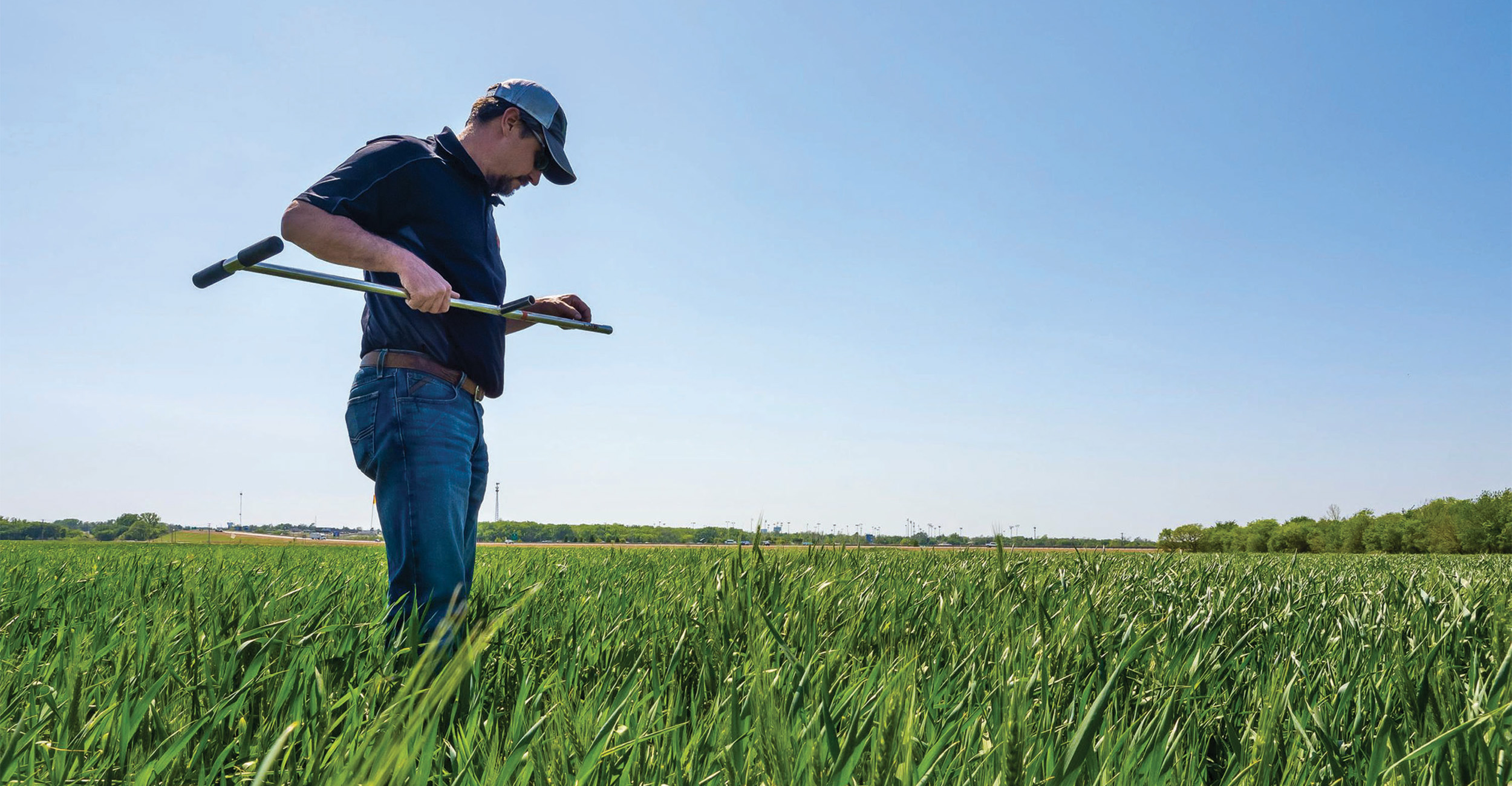
Researching Below the Wheat: OSU researchers work to advance soil fertility in wheat production
Tuesday, May 28, 2024
Media Contact: Sophia Fahleson | Digital Communications Specialist | 405-744-7063 | sophia.fahleson@okstate.edu
By 2050, farmers and ranchers will be responsible for feeding almost 10 billion people, according to the United Nations.
“Whether in the field or the lab, Oklahoma State University works toward making an impact on agriculture,” said Brian Arnall, plant and soil sciences professor.
As part of the land-grant mission, OSU Agriculture strives to feed the world, improve the Oklahoma economy, and preserve natural resources by providing research and technology to the public.
One of the research teams working toward advancements in agriculture includes Arnall and Steve Phillips, associate professor, who work in the OSU Department of Plant and Soil Sciences. Their focus is long-term nutrient cycling and dynamics of wheat.
“My team does a lot of wheat work, looking at the timing of nitrogen fertilizer and how certain varieties of wheat may yield better if fertilized at different times,” Arnall said. “I’m looking at better nitrogen recommendations in cotton, wheat, corn and sorghum.
“We’re also trying to better understand phosphorus and potassium,” Arnall added.
Phillips and Arnall conduct their research on soil fertility at the historic Magruder plots, which were established in 1892 as OSU’s first wheat research plots, as well as other plots at the agronomy farm. Their team uses many different tools and technologies at the plots to help them collect data and conduct research, Arnall said.
“We can look at the soil in 3D, going deep into the ground and sideways, looking at the nutrients and roots, allowing us to look at the environmental impact on the soil,” Arnall said.
Fertilizer inputs help develop a healthy crop and increase the nutrients found within the plant, he added.
Farmers and ranchers must sell products to make a profit, Arnall said, but when those products are removed, nutrients are depleted from the land.
“Good soil fertility is not just important for the grain production,” Arnall said. “It’s also important for the livestock being fed the grain and hay.”
Arnall and Phillips have 19 students to help with research at the agronomy farm and in the soil lab: five doctoral students, two master’s students, seven undergraduate students, three interns from Brazil and two lab technicians.
“Our commitment to education is as high as anyone by the way we involve graduate students and even undergraduate students in our research programs,” Phillips said. “In our program, we make it a priority to emphasize student involvement.
“This commitment to students is also seen in our administration and throughout our department,” he added.
Phillips teaches by the motto of “think globally, act locally,” where students are trained in research techniques at OSU so they can implement those techniques in their home country or state, he added.
In addition to the Department of Plant and Soil Sciences, other departments in the Ferguson College of Agriculture are working to make an impact in agriculture. Kelly Craven, Department of Biochemistry and Molecular Biology assistant professor, focuses his research on soil microbiomes in winter wheat.
Microbes are often seen as antagonistic or harmful, but a mutualistic relationship can exist between some microbes and plants, Craven said. Microbes in the soil can provide a natural alternative to chemical fertilizers and are not genetically modified, he said, so scientists pull them from soil with specific organic material for the betterment of plant-soil health.
“Certain groups of microbes can improve plant performance,” Craven said. “We tap into these microbes as a biological strategy to get nutrients from the soil, like a slow drip.”
Through his research on soil microbiomes, Craven combined one type of soil fungus with 10 different soil bacteria to form a simple microbe community in winter wheat roots, which can increase grain yield by 9%, he said.
In the microbiology lab, the roots of winter wheat plants are cut into pieces, which isolates microbes from inside the root.
“We are building on that to increase yield even more,” Craven said. “We can identify each microbe and amplify the ribosomal gene to tell us what it is.”
Craven’s lab also has 12 phenotypic screens used to identify useful traits in microbes. Combining that information with the microbes’ identity helps them determine the most promising microbes.
Craven is hopeful within two years a new form of fertilizer incorporating microbes will be released.
This product will be mixed with peat moss, which means no current competitors are in the fertilizer market.
In the lab and in the classroom, Craven remains committed to helping students learn about plant microbiomes.
He has three students who work with him in his research: one graduate student, one post-doctorate student and one lab manager who is about to begin his master’s program.
Across OSU Agriculture, the focus remains on using scientific progress to improve and advance the livelihood of agricultural producers, Phillips said.
“Our chance of success is measurably higher than some of our peer institutions — some of the other land-grant institutions around the nation — just because of the team we can put together in-house to address some of these issues,” Phillips said.
Story by: Campbell Edstrom | Cowboy Journal
